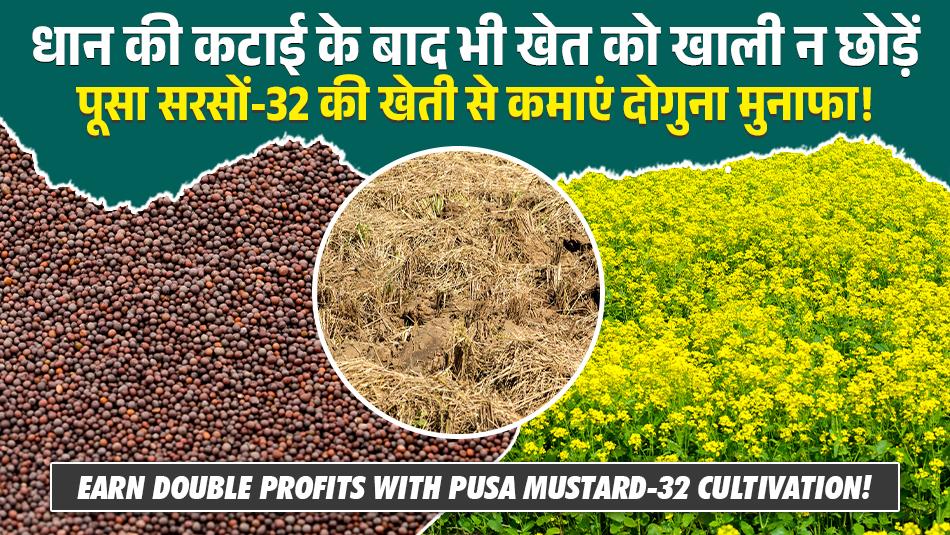
Farmers, it is often observed that after harvesting the paddy crop, fields are left idle for a long time or used for growing crops like potatoes. But this year, if you utilize your field immediately after paddy harvest for cultivating Pusa Mustard-32, you can earn higher profits in a shorter period.
Pusa Mustard-32, developed by the Indian Agricultural Research Institute (IARI), New Delhi, is a boon for farmers. This early-maturing, disease-resistant, and high-yielding mustard variety can significantly enhance your field’s productivity and boost your income. By sowing it right after paddy harvest, you make optimal use of time and land, ensuring that your next crop cycle stays on schedule. If your goal is low investment and high returns, this variety can be an excellent choice.
Pusa Mustard-32 is a scientifically developed variety from IARI, known for its fast maturity, strong disease resistance, and excellent yield potential.
One of the most important advantages of this variety is early maturity, allowing farmers to plan their next crop seamlessly.
With timely sowing and proper care, the yield can exceed these averages, further increasing profitability.
Instead of leaving fields empty after paddy harvest, cultivating Pusa Mustard-32 can be a profitable opportunity for farmers. This variety offers high yields in less time, with good market prices. By sowing at the right time and providing proper care, farmers can achieve significant growth in income and make the most of the post-paddy farming season.
Latest Update